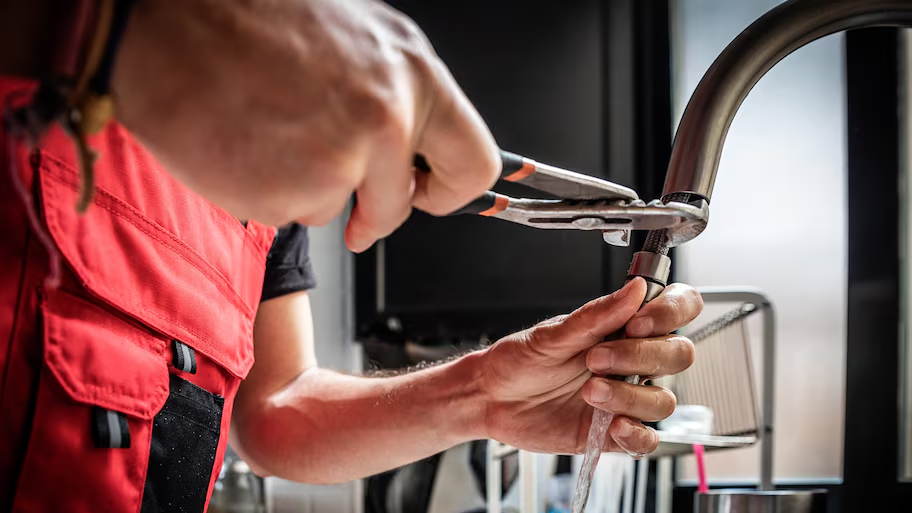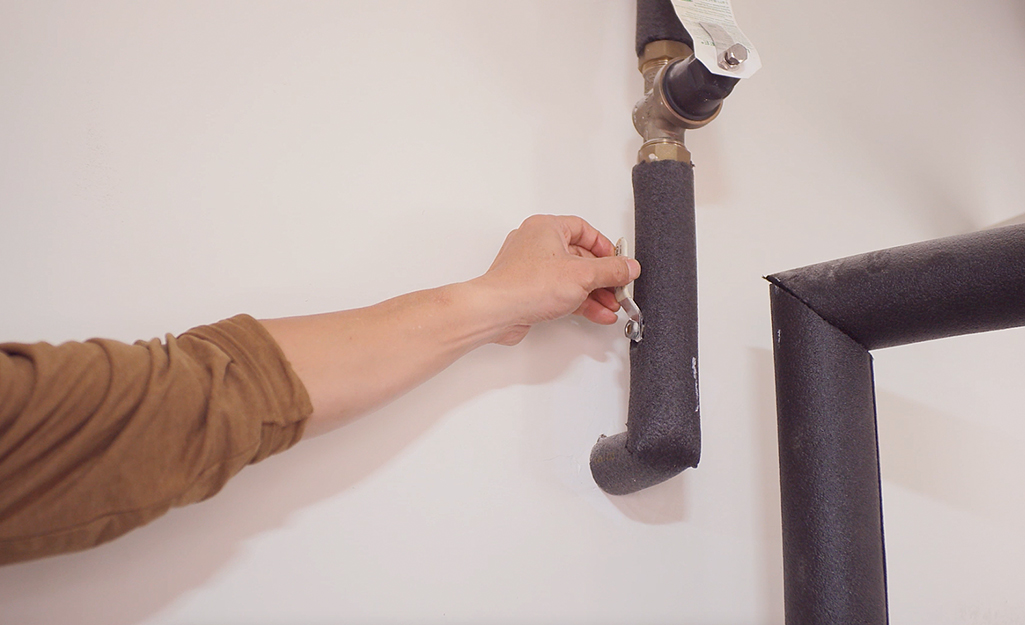The article author is making a number of great annotation on the subject of Why Is It Important To Fix Your Leaking Tap/Faucet? in general in this article underneath.

Leaking taps could appear like a minor hassle, yet their influence goes beyond just the inconvenience of the noise. From drainage to incurring unnecessary financial prices and health dangers, disregarding a dripping tap can lead to various repercussions. In this post, we'll delve into why it's crucial to address this common household problem promptly and effectively.
Wastage of Water
Environmental Influence
Trickling faucets contribute considerably to water wastage. According to the Epa (EPA), a solitary tap trickling at one drip per secondly can waste more than 3,000 gallons of water annually. This not just strains water resources but also affects environments and wildlife dependent on them.
Step-by-Step Overview to Repairing a Dripping Faucet
Tools Called for
Before trying to fix a trickling tap, gather the required devices, consisting of an adjustable wrench, screwdrivers, replacement parts (such as washing machines or cartridges), and plumber's tape.
Typical Faucet Issues and Their Solutions
Determine the type of faucet and the particular problem causing the drip. Usual issues consist of damaged washers, corroded valve seats, or faulty O-rings. Refer to maker instructions or on the internet tutorials for detailed support on fixings.
Financial Prices
Increased Water Bills
Past the environmental impact, leaking faucets can blow up water expenses considerably. The collected wastage in time equates right into higher energy costs, which could have been avoided with prompt repairs.
Possible Property Damages
Additionally, prolonged trickling can cause damage to components and surfaces surrounding the tap. Water accumulation can create staining, deterioration, and even architectural issues if left unattended, leading to added repair work prices.
Health and wellness Worries
Mold and Mildew Development
The constant existence of dampness from a dripping faucet produces an excellent environment for mold and mildew development. These fungis not only compromise indoor air high quality however likewise posture wellness threats, especially for individuals with breathing problems or allergies.
Waterborne Illness
Stagnant water in dripping taps can end up being a breeding place for germs and other pathogens, increasing the threat of waterborne conditions. Impurities such as Legionella microorganisms prosper in stagnant water, possibly causing severe diseases when consumed or inhaled.
DIY vs. Specialist Repair service
Benefits and drawbacks of DIY Fixing
While some might attempt to take care of a trickling faucet themselves, do it yourself repairs include their very own collection of difficulties. Without correct understanding and devices, DIY efforts can exacerbate the problem or bring about incomplete fixings, prolonging the issue.
Advantages of Hiring a Professional Plumber
Employing a specialist plumber ensures that the underlying source of the dripping faucet is dealt with successfully. Plumbers possess the knowledge and devices to identify and fix tap issues efficiently, conserving time and lessening the danger of more damage.
Ecological Duty
Private Payment to Conservation
Taking responsibility for taking care of leaking taps lines up with wider initiatives toward water conservation and environmental sustainability. Every individual's activities jointly make a substantial influence on maintaining valuable resources.
Lasting Living Practices
By focusing on timely repair work and adopting water-saving behaviors, individuals contribute to lasting living practices that profit both present and future generations.
Safety nets
Regular Upkeep Tips
To prevent leaking faucets, execute routine upkeep such as cleaning aerators, evaluating for leaks, and changing damaged components promptly. In addition, consider installing water-saving devices or updating to much more effective components.
Importance of Prompt Repair Works
Attending to trickling taps as soon as they're discovered avoids additional water waste and prospective damage, eventually saving both water and money over time.
Effect On Property Value
Perception of Well-Maintained Residential Or Commercial Property
Maintaining a residential property in good condition, consisting of attending to maintenance issues like trickling taps, boosts its viewed value and desirability amongst prospective buyers or lessees.
Impact on Resale Value
Properties with properly maintained plumbing fixtures, including taps, command higher resale worths in the real estate market. Resolving trickling faucets can contribute to a favorable perception throughout residential property evaluations and arrangements.
Conclusion
Attending to a dripping faucet surpasses mere benefit; it's a crucial step toward saving water, lowering financial prices, and safeguarding health and wellness and building. Whether through DIY repair work or expert help, doing something about it to deal with trickling taps is a tiny yet impactful means to advertise responsible stewardship of resources and contribute to a healthier, extra sustainable future.
How to Fix a Leaky Faucet: Step-by-Step Repair Guide
A leaky faucet may seem like a simple annoyance, but if it's not fixed promptly, that leak could cost hundreds to potentially thousands. From water damage to mold, mildew, and high water bills, even a tiny leak can be catastrophic if left unattended. Damage like this can even affect the overall value of your home, so it's important to take the right approach for leaky faucet repair. You may need the help of a plumber in some cases, but we've got a few tips you can try on how to fix a leaky faucet before calling the pros.
Four Faucet Types
When you're learning how to fix a leaky faucet, the first step is knowing what kind of faucet you're working with! There are four common types.
Cartridge Faucets
Cartridge faucets come in one- or two-handled varieties. In one-handled cartridge faucets, hot and cold water combines in a single cartridge. In the two-handled versions, hot and cold water are controlled separately and mixed in the faucet.
Ball Faucets
Ball faucets have a single lever you push up and down to adjust the pressure and rotate to change the temperature. A slotted metal ball controls the amount of water allowed into the spout.
Compression Washer Faucets
They're the oldest type of faucet, but they're still used in many homes — especially older ones. Compression faucets have two separate handles that, when turned, raise or lower the washer that seals a water valve. This valve stops water from flowing through the faucet when it is turned off.
Disc Faucets
Disc faucets rarely need to be repaired due to their maintenance-free design. The water flow is controlled by two discs — the upper one raises and lowers against a fixed lower disc, creating a watertight seal. If your disc faucet starts leaking, you may need to replace the seals or clean residue buildup from the inlets.
Fixing a Leaky Faucet
Step 1: Turn Off the Water
Whether you're learning how to fix a leaky bathtub faucet or how to fix a leaky kitchen faucet, always turn off the water supply to your working area when you're fixing a leak. The last thing you want is a flood added to your list of things to fix.
Look for the shutoff valves below your sink or around the tub and turn them clockwise to stop the water flow. If your faucet doesn't have shutoff valves, you may need to turn off the water for the whole house. Check to make sure it's off by turning the faucet on. If nothing comes out, you're ready to start the repair.
Step 2: Take Apart the Faucet
How you disassemble your faucet depends on the type of fixture you have. You can use a flathead screwdriver to remove the caps on top of the handle or handles for cartridge and compression faucets. Inside, you should see handle screws. Unscrew these with a screwdriver to remove the handle.
Disc- and ball-style faucets will typically have an inlet screw near the handle, and removing that will reveal the interior of the faucet.
Detach the Valve Stem
For cartridge- and compression-style faucets, you'll see the inner valve stem or cartridge once you remove the faucet handles. If you have a compression faucet, unscrew the brass valve stem. If you have a cartridge faucet, pull out the cartridge. If your cartridge has been in place for a while, it may require some tools or extra force to remove it due to mineral deposits.
Examine and Replace Parts
Once you've removed the parts, check them out to confirm what needs to be replaced. You may see corroded rubber washers, O-rings, stems, or cartridges. On a ball-style faucet, check the seats and springs for damage.
If you need to repair a leaky disc faucet, check the inlet and seals on the lower disc.
Once you determine what parts must be replaced, visit your local hardware store. Bring the damaged parts with you to ensure you can purchase the correct components to replace them.
Clean Valves and Faucet Cavity
If you've removed a stem or cartridge, you may notice mineral buildup in the faucet's threads. Use white vinegar to clean the valve seat by soaking it for a few minutes, then scrub it away with a soft toothbrush and rinse with warm water. You can also clean the interior of the faucet in the same way.
Reassemble the Faucet
Once your faucet is cleaned and the required parts have been replaced, it's time to reassemble it. Put the pieces back together and slowly turn the water supply back on. Doing this slowly is crucial because too much initial water pressure can damage the new hardware you've just installed.
https://homewarranty.firstam.com/blog/how-to-fix-leaky-faucet

Do you like more info about ? Create feedback further down. We'd be pleased to hear your thoughts about this content. In hopes that you come back again in the future. I beg you take the time to share this article if you enjoyed reading it. Thanks so much for going through it.
Comments on “Why It's Essential to Mend a Broken Faucet”